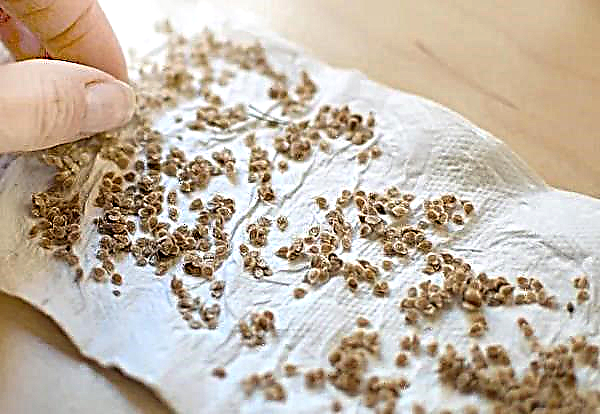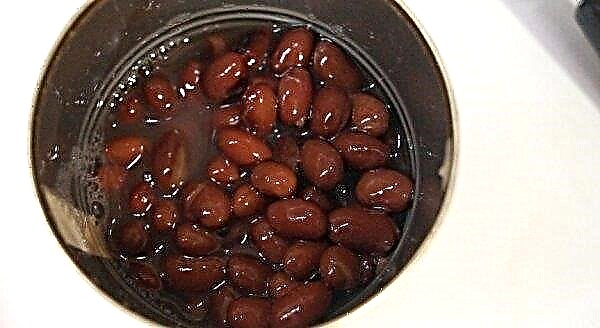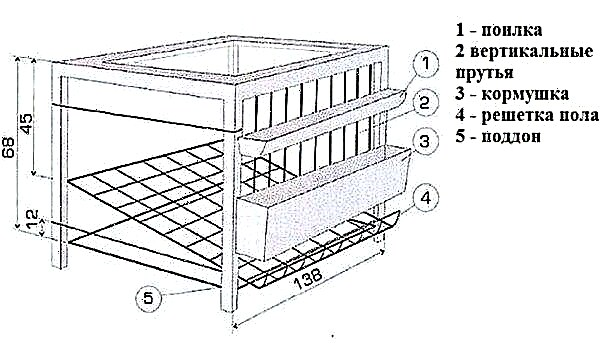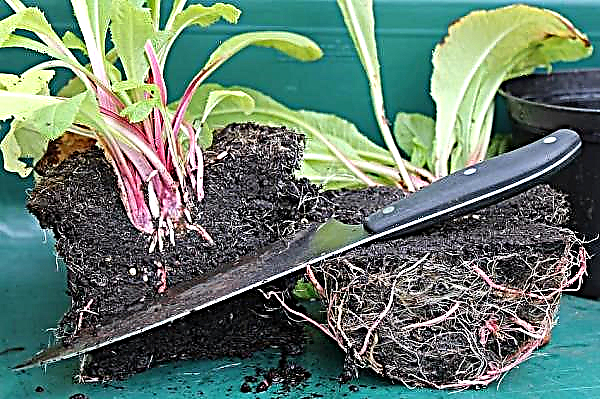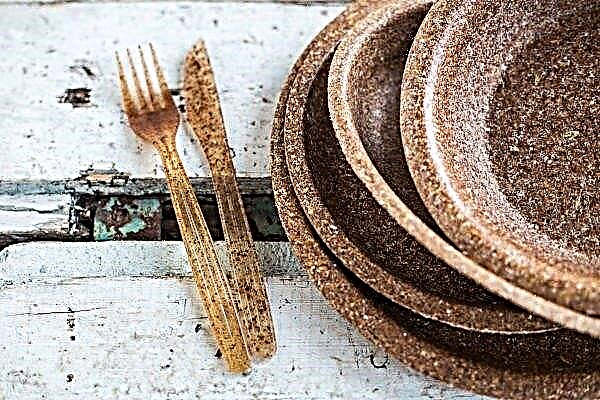Pergolas are one of the central objects on the plot. They serve as an original decoration of the cottage, as well as a favorite vacation spot for all members of the family. There are a huge number of options for summer houses, differing in shape, size, style, type of construction. A gazebo with a four-pitched roof looks very impressive and original. What are the advantages of such a structure, and what are the features of manufacturing such a roof - find out from the article.
Varieties of four-pitched roof
If the construction of a full-fledged house is not for everyone, then almost every summer resident is able to make a summerhouse with his own hands, regardless of the presence of building experience or knowledge. The simplest option for beginners is the structure of a rectangular or square shape with a four-pitched roof, which makes the design more original and unusual.
Important! Changing the length of the ridge during the construction of the hip roof, you can achieve a radical change in the type of roof and its design. For example, a short skate makes it more massive and solid.
There are several varieties of four-pitched roof:
- Hipped. Most naturally, this kind of roof looks on square arbors. It is a construction in the form of a tetrahedral pyramid, with slopes having the shape of an isosceles triangle, the vertices of which converge in the center, at the top of the roof. The advantages of the tent structure are: organic appearance, the ability to drain rain and melt water due to the slope of the bevels, ease of installation, strength, low cost of materials. Among the minuses, the masters note the need to perform calculations and measurements with high accuracy, which is not always possible with a lack of knowledge. In such cases, you should seek the help of specialists.
 1 - Mauerlat; 2 - mowing rafters; 3 - ridge node; 4 - central rafters; 5 - sprigs.
1 - Mauerlat; 2 - mowing rafters; 3 - ridge node; 4 - central rafters; 5 - sprigs. - Hip. Universal option for rectangular or square structures. Such a roof consists of two slopes in the form of a trapezoid and two triangular (hip). The tops of the trapezoid are interconnected by a line, which has the name of a horse. Hip-blood slopes perfectly protect the structure from the sun's rays, while making it possible to admire the beautiful views of the surroundings. In addition, such a roof is characterized by high reliability, low windage, and the absence of the need to clear it, since snow does not linger on its surface.

- Half hip. The design is a variant of the hip roof, which has a shortened triangular slopes. Mostly such structures are used in the construction of attic buildings, but they are rarely used to cover arbors.

- Chinese. A feature of the Chinese roof is the non-standard arrangement of beams and rafters, which seem to be deployed to the sky. For its manufacture, the development of a special project is required. Instead of traditional rafters, a post-beam construction is used here. Building a Chinese roof is quite difficult, but with its competent construction, an exclusive architectural masterpiece is obtained.

The choice of material for rafters and coatings
The manufacture of a four-pitched roof begins with the selection of a suitable material for the rafters.
The described design involves the use of the following types of rafter supports:
- diagonal - designed to hold the main load, in most cases they use double boards or wooden beams;
- intermediate - designed to connect the frame, that is, the support and the ridge;
- spawn - designed to connect diagonal rafters with a frame and parallel fasteners with intermediate ones.
As a rule, lumber is used to organize the rafter system, in particular softwood. The frame base is performed using a rectangular beam. Sometimes, as an alternative, boards with a cross section of 50 × 200 mm or double boards can be used.

To increase the strength and reliability of the structure, metal elements are used that reinforce the rafters and make their interchange unchanged. Also, steel parts can be supplemented with supports. Such a combined rafter system is characterized by high strength, wear resistance and a long period of operation.
As for the roofing material, when choosing it, experts advise taking into account several factors: cost, appearance, practicality and ease of installation.
Important! It should be borne in mind that rolled materials are very inconvenient to work for a four-pitched roof, so they are rarely used.
Today, they are very popular and in demand:
- Soft roof, the basis of which is shingles. It is an elastic sheet made of fiberglass or technical fiberglass and impregnated with modified bitumen. The surface of the tile is covered with a special colored sprinkle, which makes it possible to choose the material of the required color. Flexible bitumen sheets are easy to cut, quickly assembled and fit into any pattern. The disadvantage of laying tiles is the need to create a continuous crate, since the sheets are flexible and need a solid foundation.

- Ceramic tile. The selection of such material is simply huge. Today, manufacturers offer more than a dozen types of roofing. Modern ceramic tiles are characterized by a large difference in shapes, colors and styles. The roof of this material has an amazing appearance, high resistance to temperature extremes and ultraviolet radiation, resistance to color fading. Of the minuses of ceramic tiles can be noted its high cost, high weight, some complexity of laying.

In addition, the roof of the gazebo can be made of simpler and cheaper materials:
- ondulin - the lightest material;
- polycarbonate - modern roofing material, which has excellent wear resistance, fire resistance, the ability to retain heat;
- plain slate - for its installation should use a bar with a large cross section;
- metal profile sheets - easy to install, but during rain such a coating will emit a lot of noise.

DIY step-by-step construction instructions
The design of four-pitched blood for a summer house is not particularly difficult. Nevertheless, when erecting a roof of one type or another, it is necessary to take into account some important nuances. When carrying out work, the most important thing is to calculate the load on the rafter system. With a large building area, this task is recommended to be entrusted to professionals.
Hipped roof
The hipped roof resembles a tent in shape, which is why it bears such a name. It consists of four slopes of a triangular shape, which converge with vertices at one point. A feature of this structure is its strict symmetry. That is why, before erecting a roof, experts advise making a drawing with all the necessary calculations, which are carried out according to certain formulas.
Did you know? The world's largest metal roof is considered to be above the Ferrari World shopping center in the UAE. The roof area is equal to the area of 50 football fields.
Next, a step-by-step algorithm for manufacturing a standard tent roof is based on the following steps:
- Between the racks located on the sides, pull the cord and mark the middle of the gazebo.
- As a guide, set the board at a central point and fix it using any convenient method.
- To determine the location of the diagonal rafters, pull the cord from the top of the center point to the corner supports.
- Install hanging rafters with a puff, using a board of 150 × 50 mm or a beam of 50 × 50 cm, up to 2.25 m long.
- Similarly, install a second pair of diagonal supports.
- Between the mounted rafters, install another third and fourth pair. In this case, you should clearly act on the marking without shifting the central reference point.
- Mark and arrange the sprigs, while on each side attach the boards with short bars.
- On the diagonal supports, mark the length of their extension and pull the cord for marking.
- Align all installed supports according to the marking.
- Between pairs of diagonal rafters, fix the puffs by means of boards 150 × 50 mm.
- Place the puffs between the other supports, while setting them higher or lower than the previously mounted ones.
- Nail the wind board to the ends of the supports, cover the roof with any roofing material or install a crate under the membrane type of roof.
 When carrying out work, it is very important to ensure that the rafters are correctly connected in the ridge, that is, the center remains in its original position and does not even move by a millimeter.
When carrying out work, it is very important to ensure that the rafters are correctly connected in the ridge, that is, the center remains in its original position and does not even move by a millimeter.
Hip
The technology of erecting a hip roof begins with the installation of vertical supports on which a ridge run is mounted on top.
Next, proceed to the installation of diagonal support oblique:
- From the bottom, the rafters should be connected with the strapping beam at the corners of the structure, and from above they should be fastened with the help of the ridge beam.
- Strengthen the rafters with additional vertical posts.
- Fasten the supports and rafters together with steel brackets.
- Mount the rafters of the side roof with an interval of 60 cm. Attach the lower part to the strapping beam and fix with steel brackets. Connect the upper part over the ridge run with steel plates.
- The final stage is the installation of sprigs, with a step of 60 cm, one side of which rests on a strapping beam, and the other is connected to a diagonal slant beam.
Next, lay the base for the roofing material. It should be noted that each type of coating raw material dictates its requirements for the base. For example, under the tile, it is necessary to make frequent lathing, for rebate sheets - lathing with a rarer step, roll coatings are mounted on smooth slopes, etc. The most optimal roofing material for a hip roof is considered to be a flexible tile that quickly fits and has an amazing appearance.
Half hip
The semi-hip or Danish roof is made in the form of a triangle, in which a vertically arranged trapezoid pediment acts as a support. Its main difference from the hip is more shortened end slopes. The installation of a half-hip frame begins with a ridge run.
For this:
- In the middle of the ceiling, place two vertical supports on which to fix the ridge beam.
- Fix the structure with temporary struts to avoid further deformation.
- Mount two pairs of rafters on the assembled frame, two beams on each side of the ridge cross member.
- Reinforce and secure the frame with spacers.

After installation of the ridge run, it is necessary to collect half-hip slopes:
- Attach a support cross member to a vertical stand and temporarily fix it with ordinary rafters.
- Cut and mount the hip supports.
- After leveling the plane, secure the support cross member overhaul.
- Cut the remaining half-hip slopes and set according to measurements for each beam.
- Lay the ordinary supports and install the previously prepared crate.
The final stage of the construction of a half-hip roof is a vapor barrier flooring and installation of roofing material.
Did you know? Many people mistakenly believe that tiles are an invention of our time. However, scientists have found samples of this material, several thousand years old. Previously, the tiles were called shingles and looked like wooden plates with recesses for fastening.
Chinese
The Chinese roof is one of the most difficult to install structures, which requires the construction of an unconventional rafter system, and the creation of a post-beam structure. To make it, you first need to make a drawing of the eastern roof on a sheet of paper, stock up with the necessary building materials, in particular boards and sheets of plywood.
The roof is built according to this algorithm:
- Position the vertical support strictly in the center and check its location with a level. The length of the support should correspond to the width of the rafter structure.
- Fix the support, attach the board to it so that its end hits the center of the support beam and touches the point located at the very top.
- Connect the next board with the middle of the previous beam and the extreme point of the support beam. By a similar method, mount all the other rafters. It is important between the rafters to observe an interval of 50–70 cm.
- Install plywood sheets and cut them to ¾ thickness so that they fit snugly onto the structure.

As a rule, as a roofing material for a Chinese roof, a soft bituminous tile is used, which looks stylish, spectacular and luxurious.
Four-pitched roofs for the gazebo is a simple and economical option for finishing a summer house, the assembly of which is even possible for a beginner. Unlike a single or gable roof, which have a meager and monotonous appearance, a four-gable roof looks more impressive and solid, gives the structure volume, harmony and a complete look.

 1 - Mauerlat; 2 - mowing rafters; 3 - ridge node; 4 - central rafters; 5 - sprigs.
1 - Mauerlat; 2 - mowing rafters; 3 - ridge node; 4 - central rafters; 5 - sprigs.




